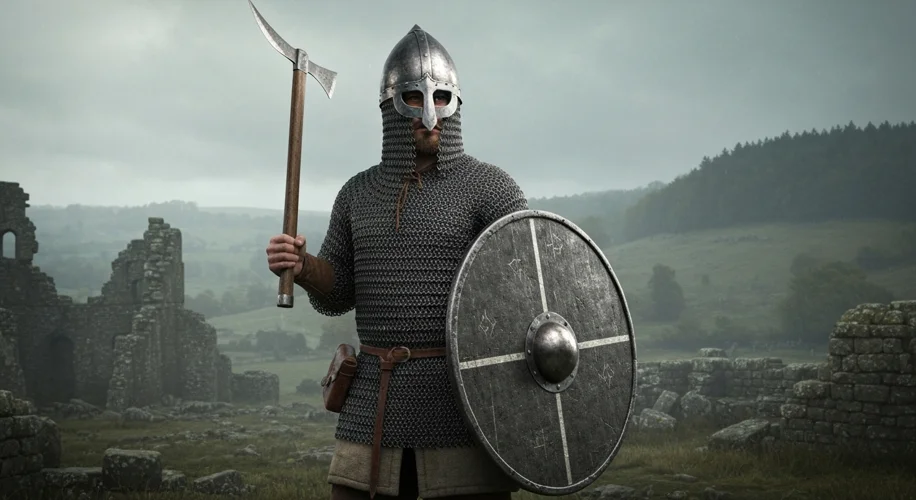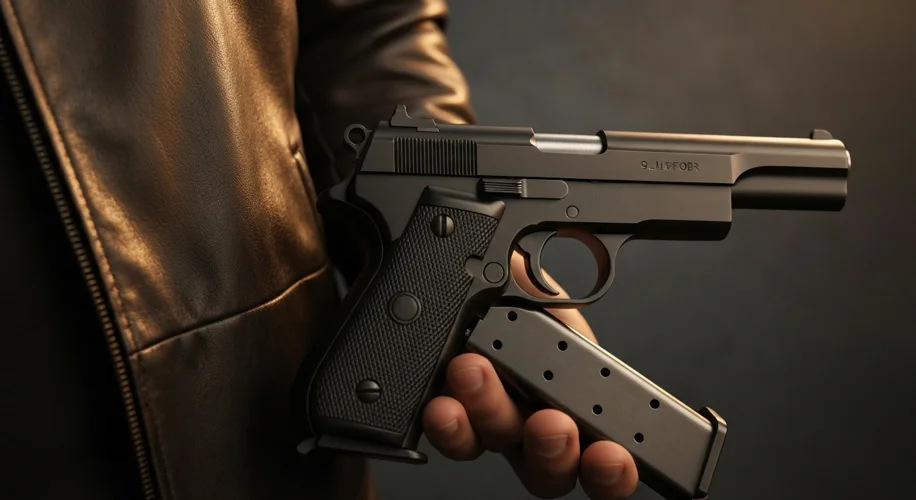The clatter of mail, the thud of a shield, the keen edge of a sword – these were the sounds that echoed across the battlefields of Anglo-Saxon England. For centuries, from the departure of the Romans to the Norman Conquest, this was a land forged by warriors, a society where martial prowess was not just admired, but essential for survival. The men who fought in this era, often called the Anglo-Saxons, were not faceless hordes but individuals equipped with distinct arms and armor, reflecting a culture deeply intertwined with warfare.

Life in Anglo-Saxon England was a constant negotiation with peril. The island was subject to invasions and raids from seafaring peoples like the Vikings, and internal conflicts were common among the various kingdoms. This environment demanded a population that could defend itself. While not every freeman was a dedicated warrior, a significant portion of the male population was expected to contribute to the defense of their community or kingdom, particularly during times of crisis.
The backbone of an Anglo-Saxon army was the fyrd. This was essentially a levy, a citizen militia drawn from the free landowners. The equipment of a member of the fyrd would vary greatly depending on their wealth and status. The more affluent could afford better protection and weaponry. At the lower end of the spectrum, a warrior might carry a simple spear and a wooden shield, perhaps a knife for close combat. For those with more means, the arsenal expanded significantly.
The Helmet: Protection for the head was paramount. The most iconic helmet of the era is the conical helmet, often featuring a projecting nose guard, known as a nasal. These were typically made of iron or steel. Some of the most elaborately decorated helmets, like the famous Sutton Hoo helmet, showcase intricate craftsmanship with silver and garnet inlays, suggesting they belonged to high-ranking individuals or even royalty. These helmets were not just for protection; they were also status symbols, conveying the wearer’s importance.
Body Armor: Mail, or chainmail, was the most effective form of body armor available to the Anglo-Saxons. A mail hauberk, a long shirt of interlinked metal rings, provided excellent protection against slashing blows and many types of thrusts. However, mail was incredibly labor-intensive to produce and therefore very expensive, meaning only the wealthiest warriors could afford a full hauberk. Less wealthy warriors might rely on padded linen or wool tunics, or perhaps a leather jerkin, to offer some minimal protection.
Shields: The shield was a ubiquitous and vital piece of equipment. The most common type was the round shield, typically made of wood and covered with leather, with a prominent iron boss in the center. The boss served two purposes: to strengthen the shield and to provide a handle for the user. Shields were often painted with various symbols or colors, serving as identification for different units or simply as a means of personal expression. Shields were not just defensive; they could also be used offensively, to bash and unbalance an opponent.
Weapons: The primary offensive weapon for most Anglo-Saxon warriors was the spear. It was a versatile tool, effective for both thrusting in close combat and for throwing at a distance. The spearhead was typically leaf-shaped and made of iron. Attached to the spear was a wooden shaft, often about 5-7 feet long.
For close-quarters combat, the sword was the weapon of choice for the more affluent. Anglo-Saxon swords were typically double-edged and about 2-3 feet long. Many were beautifully crafted, with decorated hilts and pommels, often inlaid with precious metals and stones. The production of these swords was a complex art, and a high-quality sword was a prized possession, often passed down through generations.
A shorter, single-edged knife, known as a seax, was another essential weapon. It was a practical tool used for everything from daily chores to close-quarters fighting. The size of a seax could vary greatly, from a small utility knife to a longer, sword-like blade. For the less wealthy, the seax might be their primary or only bladed weapon.
Fighting Style: Anglo-Saxon warfare was characterized by close-quarters combat, often fought in shield walls. Warriors would stand shoulder-to-shoulder, shields interlocked, presenting a formidable barrier to their enemies. The spear would be used to keep opponents at bay, while swords and axes would be employed when the lines broke or for individual duels. Discipline and cohesion were key to the effectiveness of the shield wall, turning a mass of individuals into a unified fighting force.
The military organization of the Anglo-Saxons was largely feudal in nature. The king or lord was the supreme commander, supported by a retinue of housecarls – professional warriors who were well-equipped and loyal to their lord. These housecarls formed the elite core of the army, often serving as the king’s bodyguard and forming the vanguard in battle. The fyrd, as mentioned, provided the bulk of the fighting force.
The legacy of Anglo-Saxon warfare is etched into the very fabric of English history. The skills and equipment of these warriors laid the groundwork for the development of military traditions that would continue to evolve. Their arms and armor were not merely tools of destruction, but reflections of a society that valued courage, loyalty, and the ability to defend one’s homeland against all odds. The image of the Anglo-Saxon warrior, clad in mail and gripping his shield, remains a powerful symbol of a warrior society that shaped the destiny of England.

